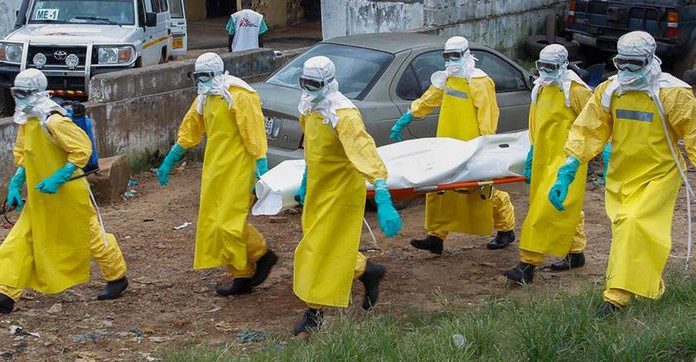
Although news about Ebola has all but disappeared from U.S. TV screens and social media in recent weeks, the world’s worst Ebola outbreak is far from over in West Africa, where the deadly virus continues to wreak havoc.
Ebola’s spread has begun to level off in two of the worst-hit countries — Liberia and Guinea — and the World Health Organization (WHO) says the two nations have made progress in isolating patients. But experts caution that such gains are fragile and easily reversed. “There is no room for optimism as long as you are dealing with an Ebola virus,” WHO assistant secretary-general Bruce Aylward said Monday. Meanwhile, the disease remains rampant in neighboring Sierra Leone. The economies of all three West African nations are still reeling from the crisis, and a recent United Nation report warns of impending food shortages and famine.
Peter Piot, one of the scientists who first discovered Ebola in 1976, warned last week that the epidemic could get worse before it gets better. “Let’s not forget that this whole epidemic started with one person — in other words, it will not be over until the last person with Ebola is dead or has recovered without infecting other people. That is the daunting task we face,” Piot said. Indeed, Anthony Banbury, head of the UN Mission for Ebola Emergency Response (UNMEER) warned just last week that there is still a “huge risk” that the deadly virus could spread to other parts of the world.
The statistics on the Ebola outbreak listed below illustrate the scale of the ongoing health crisis in West Africa and remind us that it will take a global effort to defeat the deadly disease.
6,187
The number of people who have died in the outbreak as of Dec.3, according to the WHO. However, the WHO has warned that these numbers are a “vast underestimate” of the reality.
17,517
The number of cases reported as of Dec. 3, according to the WHO. Almost all of the cases, and all but 15 of the deaths, have occurred in the three worst-affected countries: Guinea, Sierra Leone and Liberia.
30
The percentage by which Ebola cases in Sierra Leone increased over three weeks in November. The number of Ebola cases is surging in Sierra Leone, even as Guinea and Liberia have reported signs of progress.
622
The number of health care workers who have contracted Ebola as of Nov. 30. Some 346 medics have been killed by the virus in the three hardest-hit African countries, where health care professionals were already in desperately short supply.
400
An estimate of the number of health care workers who went on strike at the only Ebola treatment center in south Sierra Leone last month to protest unpaid risk allowances, allotted to the workers for their hazardous working conditions. Burial workers have also gone on strike in the Sierra Leonean city of Kenema over non-payment of allowances and left 15 bodies outside the main hospital in protest last week.
4,000
The United Nations’ estimate of the number of children orphaned by Ebola in Guinea, Liberia and Sierra Leone. “Orphans are usually taken in by a member of the extended family, but in some communities, the fear surrounding Ebola is becoming stronger than family ties,” UNICEF’s West and Central Africa Director Manuel Fontaine pointed out.
1.5 million
The number of people who have received aid from the World Food Program in Ebola-affected areas. Thousands of people are having to break quarantine restrictions in order to get hold of food, the umbrella aid group Disasters Emergency Committee warned last month.
$2 billion
The World Bank’s estimate of the economic cost of the Ebola outbreak to Sierra Leone, Liberia and Guinea in 2014 and 2015. The group’s latest report, released Tuesday, warned that the health crisis would slow or wipe out economic growth in the worst-hit countries.
$32.6 billion
The World Bank’s worst case scenario estimate of the cost of the Ebola outbreak to the regional economy.
Zero
The number of approved vaccines and treatments for Ebola. Although several drugs are in the testing phase, none have yet been proven effective against the virus. This fact underscores the absolutely critical need to stay vigilant in our fight against one of the deadliest diseases known to man.
